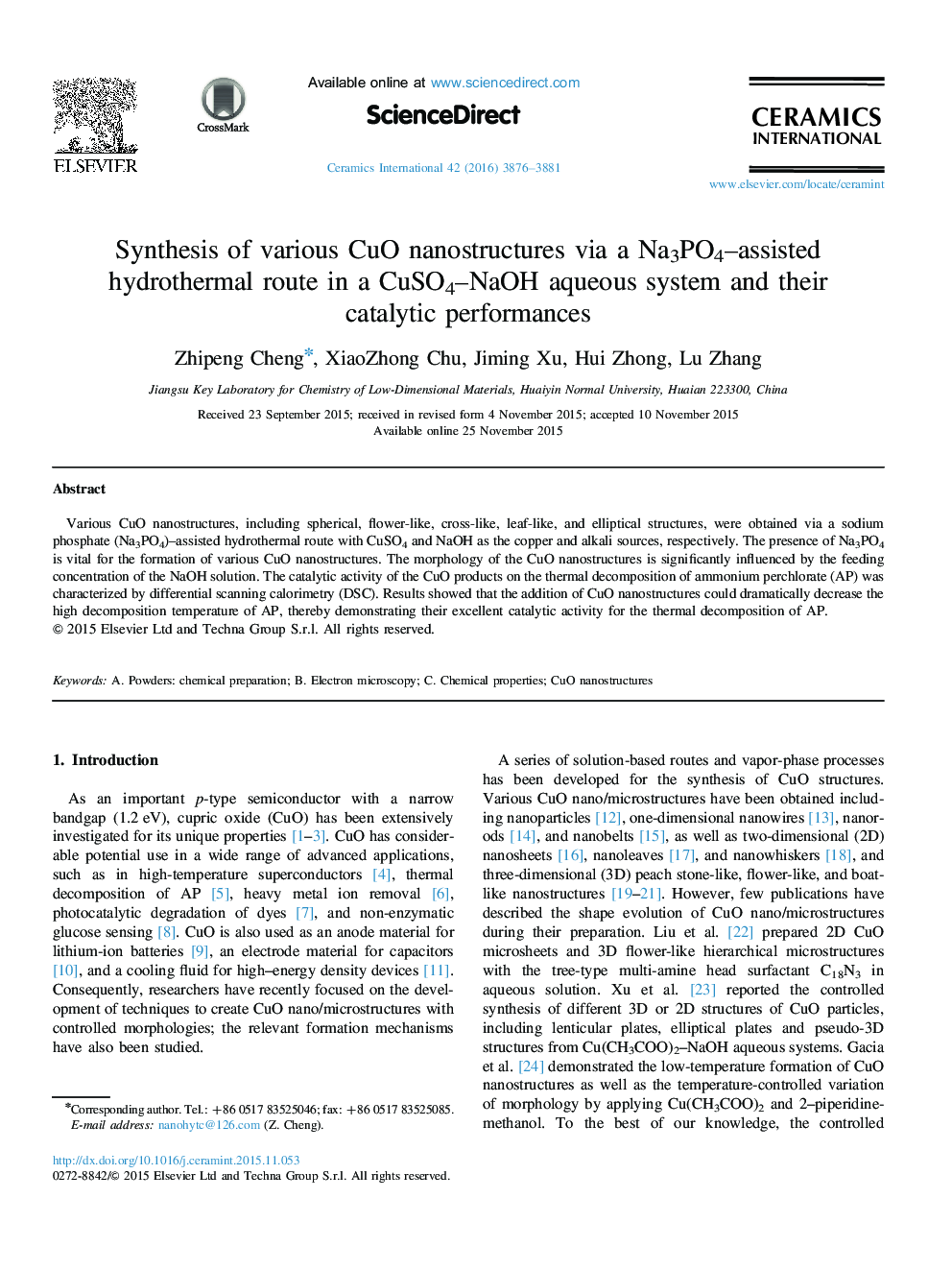| Article ID | Journal | Published Year | Pages | File Type |
|---|---|---|---|---|
| 1459117 | Ceramics International | 2016 | 6 Pages |
Various CuO nanostructures, including spherical, flower-like, cross-like, leaf-like, and elliptical structures, were obtained via a sodium phosphate (Na3PO4)–assisted hydrothermal route with CuSO4 and NaOH as the copper and alkali sources, respectively. The presence of Na3PO4 is vital for the formation of various CuO nanostructures. The morphology of the CuO nanostructures is significantly influenced by the feeding concentration of the NaOH solution. The catalytic activity of the CuO products on the thermal decomposition of ammonium perchlorate (AP) was characterized by differential scanning calorimetry (DSC). Results showed that the addition of CuO nanostructures could dramatically decrease the high decomposition temperature of AP, thereby demonstrating their excellent catalytic activity for the thermal decomposition of AP.
